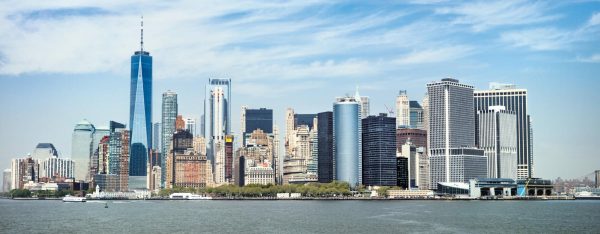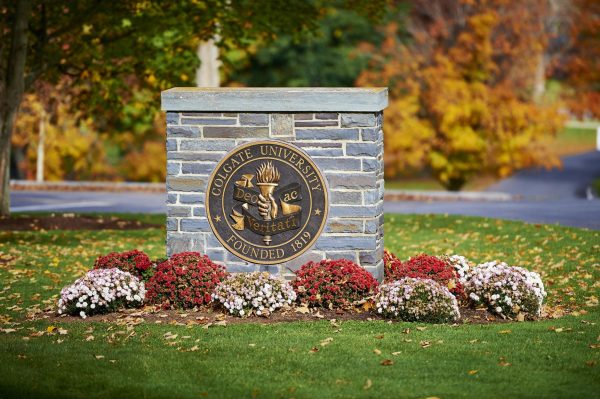Colgate Community: Are Representation and Inclusiveness Realities for Students of Color?
Colgate prides itself on its policies related to Diversity, Equity, and Inclusion (DEI), along with its generous financial aid packages and visible diversity. Still, it’s no mystery to students that the campus itself maintains a culture of whiteness; friend groups tend to be monocultural and racial hierarchies are perpetuated through extracurricular activities. Being a biracial student from a Baltimore City public school, coming to Colgate was a culture shock. Students are seemingly from the same social spheres, similar socioeconomic backgrounds and hold the same ideologies. I often doubt the validity of my experience— after all, I am half white and aware that I benefit from that identity. When I was having a hard time adjusting as a first-year student, I told myself that I might just be bad at code-switching. I had never been in solely white environments, and I knew I would never be white-passing.
I talked to my friend and coworker at Colgate’s Career Services office, sophomore Clementina Aboagye, about her time at Colgate and whether or not she felt valued, accepted and integrated into the environment. Aboagye has completely enveloped herself into the Colgate community, as a member of numerous organizations such as Sisters of the Round Table (SORT) and The Swinging Gates, so I knew that if anyone could speak on the subject, it was her.
Before I talked to Aboagye, I had a largely optimistic outlook on race relations at Colgate. As far as integrating BIPOC students, the school seemed to give good financial aid, administer a quick Diversity, Equity, and Inclusion program and call it a day. Aboagye confirmed at least the first part of my generalized assumption. She informed me that before coming to Colgate, the school had immediately taken an interest in her, showing commitment beyond paper.
“Colgate was one of the schools on my Questbridge list. I was a finalist for Questbridge, the national scholarship. However, I did not match with any of the schools that I put on my list, which included Colgate,” Aboagye said. “But they said they wanted me; that I was somebody in their positive pool of applicants, and if I would ED, they would accept me immediately.”
She described that Colgate had indeed attracted her because of its track record with good financial aid for low-income families; even other Questbridge schools don’t necessarily offer the same generous packages. Once she got to Colgate, she found that she was equally valued in her classroom environments. However, Aboagye noted that she went to a predominantly white high school and is familiar with adjusting to different spaces.
“I like to say I’m somebody who speaks up for myself a lot. Self-advocacy is something that I’ve been trained in since I was young. It’s kind of an ingrained part of me. So this might not be a testament to other people who look like me, coming to this space where it’s majority white,” Aboagye said.
She knows she has a unique ability to access white spaces, and to some degree become comfortable and thrive. Even so, Aboagye says it can be daunting being the only Black person in the room. But she’s never experienced any blatant racism, microaggressions, or as she names them, “explicit acts of violence.” And this same pattern is exhibited socially, as Aboagye feels as though there is frequently performative behavior and activism.
“There’s very much a white silence— this idea that ‘I’d rather not say anything so I don’t say anything wrong.’” To Aboagye, this is even more dangerous. Especially when there’s ignorance that isn’t out of malice.
This idea was transformative to me, as I’ve always adopted the mindset that we live in a society where it’s easy to be educated, so any type of ignorance is unacceptable. Aboagye tries to perceive everyone as well-intentioned in whatever they do. “In every situation I do try to be empathetic. I want to create a space where people can know what they did wrong in that moment and be corrected, and trust that in that correction they are not taken out of context,” Aboagye said.
People like Aboagye will be the reason Colgate progresses. Her ability to show empathy will help alter the University’s ingrained culture of whiteness. Talking to her made me realize that even though Colgate still has a long way to go, the first step is to reflect on how my own behavior might be inhibiting progress. In believing I couldn’t fit into white environments, I created my own reality. And although I could find haven in ALANA or multicultural groups on campus, my singular perception of my identity made me isolate myself, believing that I wasn’t valued or wanted in spaces with people who didn’t look like me.
“As human beings we gravitate towards spaces with people who look like us,” Aboagye said. While Colgate attempts to diversify its environments, I must do the same.













Rachael Eavenson • Sep 19, 2022 at 8:30 am
Thought provoking!